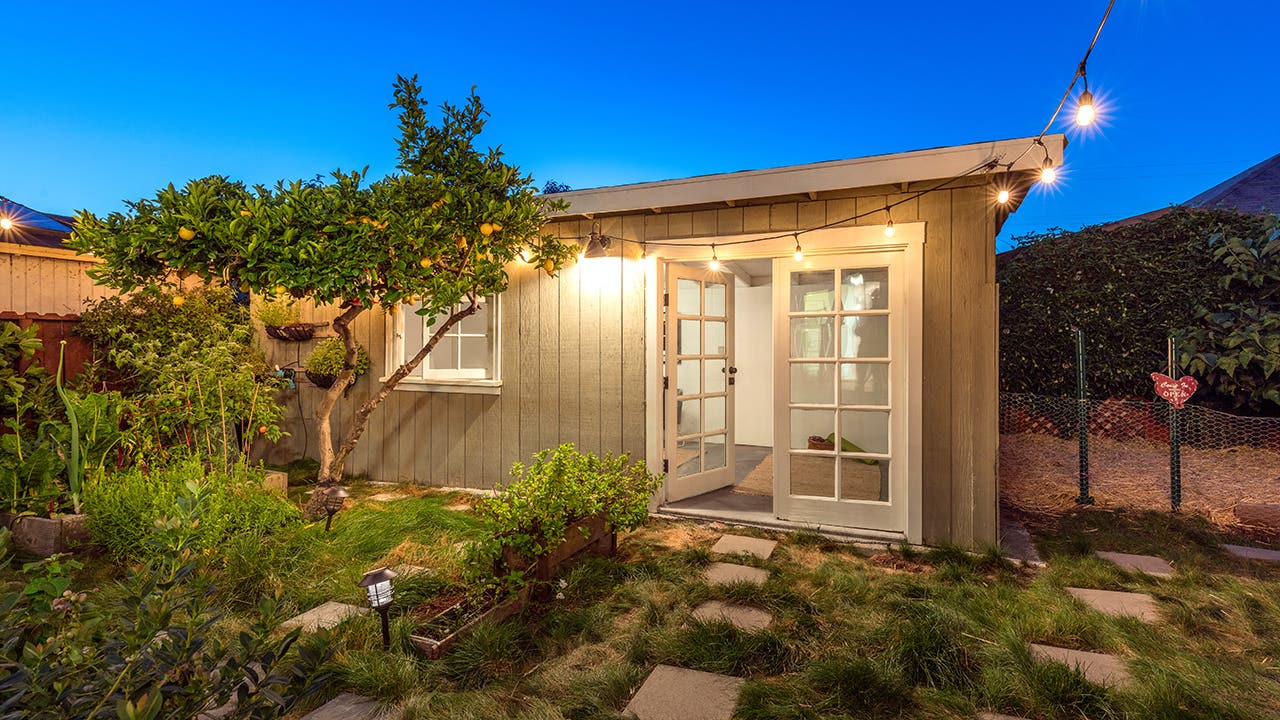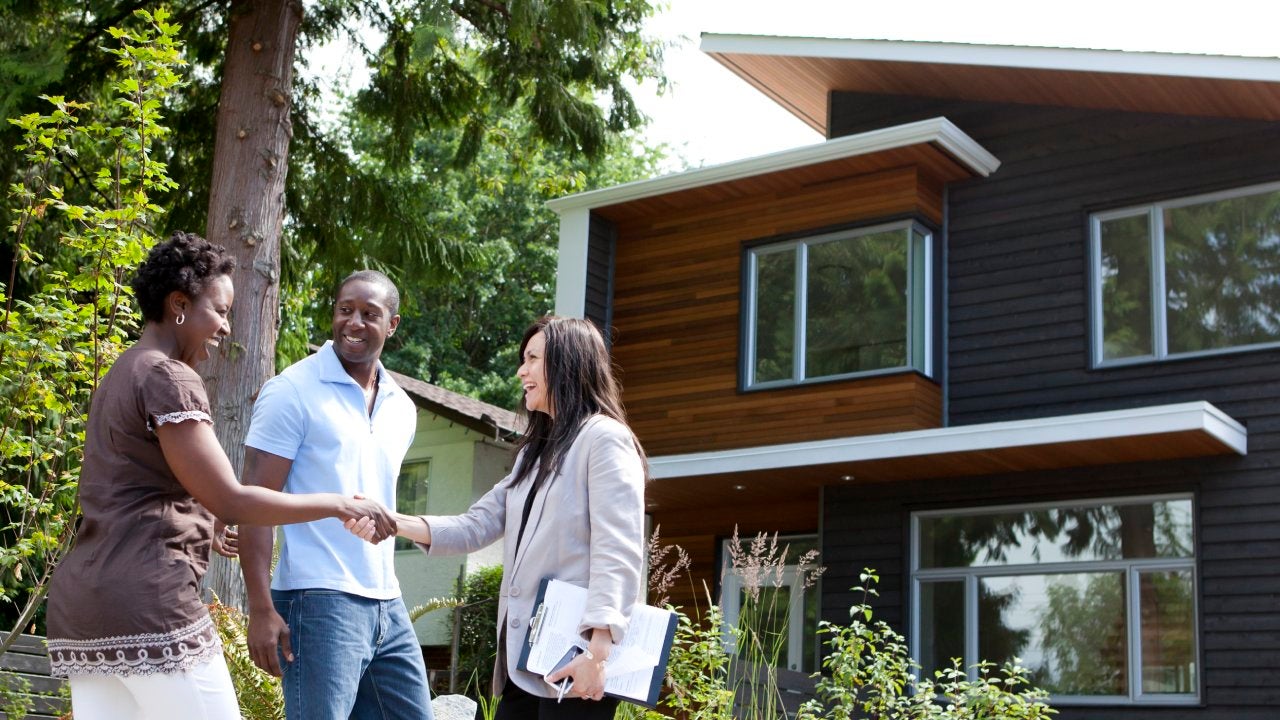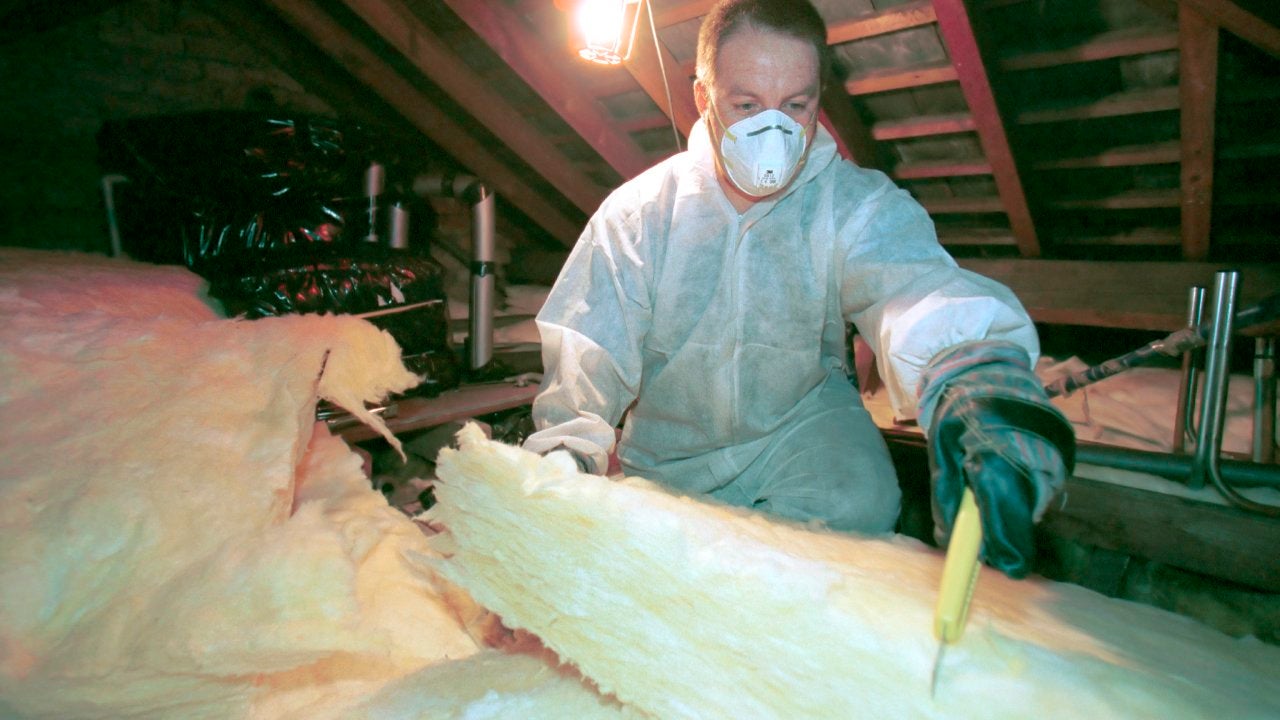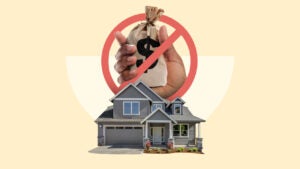Tiny homes: Are they worth it?

What’s 400 square feet and available on Amazon? It’s not a pool cabana or yard inflatable — it’s a tiny home. For a cool $50K, you can join the tiny home movement, with some assembly required. During the Great Recession and housing bubble burst of 2008, tiny living emerged as a more affordable, accessible solution to homeownership. These days, tiny homes are loved for their smaller carbon footprint and minimalism. But, do the best things truly come in small packages?
Bankrate’s insurance editorial team investigates whether tiny homes are good investments, especially when traditional homeownership is slipping further out of reach.
Types of tiny homes
There’s more than one way to live the tiny life. The traditional tiny house on wheels (also called a THOW) is mobile and offers flexibility, ideal for nomadic homeowners. Converted shipping containers provide a sustainable option, repurposing industrial materials. Tiny cabins have a rustic charm, often nestled in natural settings. Modern modular tiny homes are customizable and efficient, allowing for easy expansion when needed. And treehouses — elevated tiny dwellings — offer a whimsical living experience. In addition, there are minimalist micro-apartments in urban settings that maximize space usage.
These diverse types of tiny houses reflect a growing trend toward sustainable, efficient and adaptable living spaces.
How much is a tiny house?
The average cost of a tiny home can vary widely based on factors such as size, location and customization. A basic tiny house might cost between $20,000 and $60,000, while more elaborate or custom-built options can exceed $180,000. Prices fluctuate based on individual choices and market conditions, making research crucial for those considering the affordability of a tiny home. Surprisingly, it’s usually more affordable to build a tiny home than buy something prebuilt.
This table can help you estimate the cost to build a house for both tiny homes and traditional homes.
| Expense | Tiny home estimate | Traditional home estimate |
|---|---|---|
| Land and parking | Varies by state and size of the lot. If you’re building on wheels, you’ll need a large trailer that costs between $4,500 and $9,000 (HomeAdvisor). Parking costs for a tiny house on wheels (THOW): $300-$600/month (The Tiny Life) | Varies by state and size of the lot. The median value of a lot is $58,000 (National Association of Home Builders). Parking costs: N/A |
| Building permits and taxes | Varies depending on location, but you can expect to spend between $400 and $2,300 (Bob Vila) | Permits cost $500-$3,000; taxes vary based on location (HomeGuide) |
| Foundation | $5,000 to $8,000 (Bob Vila) | $9,383 (HomeAdvisor) |
| Home systems (electrical, HVAC, plumbing) | $250-$5,000 for electrical; $1,000-$2,500 for HVAC (Bob Vila); $1,500-$4,000 for plumbing (United Tiny Homes) | $30,000-$75,000 (NewHomeSource) |
| Cost per square foot for exterior (roof, siding, windows) | $150 to $450 per square foot (House Beautiful) | $150 to $400 per square foot (Quicken Loans) |
| Home insurance | Varies based on policy type | $2,311 per year for $300,000 in dwelling coverage (Quadrant Information Services) |
| Appliances | $400-$4,500 (Great Lakes Tiny Homes) | $10,875 (HomeAdvisor) |
| Energy/electric costs | $20-$50 per month (Element Homes) | Around $400 per month (Inspire Clean Energy) |
Home insurance for tiny homes
Insuring a tiny home can be a big headache. The kind of policy you need will depend on the kind of tiny home you have and its specific features. Plus, your state will probably have its own rules and regulations when it comes to how tiny home policies are written. To qualify for insurance, a tiny home must be in line with local building and zoning codes.
If you have a THOW, it’s possible that you’ll insure your tiny home with an RV policy. Or, if it’s on a foundation, your home may be covered under a mobile or manufactured home policy. Some tiny homes could even qualify for a traditional home insurance policy, depending on the build.
To find a sufficient insurance policy for your tiny home, your best bet is speaking to a licensed insurance agent. Tiny home insurance policies are usually evaluated on a case-by-case basis, and working with an industry professional could help you craft the perfect policy. Monthly payments on a tiny house insurance policy will likely depend on your policy type and coverage limits.
What are the financing options and challenges for a tiny home?
Financing a tiny home presents unique options and challenges. Traditional mortgages may be difficult to obtain due to the unconventional nature of tiny homes. Some homeowners opt for using personal savings or crowdfunding. However, an increasing number of specialized lenders are offering tiny home loans, catering to this growing market. Challenges include zoning restrictions and a lack of standardized building codes, which may impact loan approvals.
Tiny house statistics
While tiny homes are generally cheaper than traditional houses, costs associated with them can still stack up. Additionally, the minimalist lifestyle, while great for travel and the environment, may not be for everyone. Consider the following statistics before deciding whether or not to purchase a tiny home.
- To be considered a tiny home, a structure must have a ceiling height of no less than 6’4″ in bathrooms and kitchens, while the rest of the house must have ceilings of at least 6’8″. (Great Lakes Tiny Homes)
- The smallest tiny homes are around 60 square feet. (Great Lakes Tiny Homes)
- A tiny home uses about three to four kW of power per day, while a traditional home uses an average of 26-33 kW daily. (Ecobee)
- Residents of tiny homes have an ecological footprint that is 45 percent lower than those in traditional homes. (Green America)
- Vermont, Kentucky, Arkansas, Maine and Minnesota are considered the most tiny-home-friendly states. (Newsweek)
- 60% of tiny house owners have no credit card debt. (Tiny House Society)
- 55% of tiny house owners have more savings than the average homeowner. (Tiny House Society)
What are the challenges of moving into a tiny home?
Moving into a tiny home can be an appealing idea, but the move does come with challenges. Potential dwellers must navigate obstacles, starting with the fact that these tiny buildings are not accepted housing options in some areas. Here are some pros and cons for individuals to consider when they undertake tiny home living.

Pros
- Eco-friendly, with a smaller environmental footprint
- Allow for a simplified and less cluttered lifestyle
- Increased mobility, especially for those who have tiny homes on wheels

Cons
- Zoning and legal hurdles possible
- Small homes mean increased space constraints
- Accessing utilities can be a challenge in remote locations
What are the restrictions regarding where you can live in a tiny home?
Tiny home dwellers often face restrictions on where they can live due to zoning laws and building codes. Many municipalities have minimum square footage requirements for residences, which tiny homes may not meet. Some areas strictly regulate accessory dwelling units (ADUs) or require specific foundation types, limiting the acceptance of tiny homes on wheels. And not all communities are equipped to handle off-grid living, which can pose challenges for those seeking a more remote lifestyle. Navigating these restrictions requires careful research and consideration of local regulations.
Living off the grid
A simplified life off the grid — i.e., away from municipal utilities — is appealing to many people and often goes hand in hand with a desire to explore the world of tiny homes. For many individuals, this moves them toward life as a homesteader, which often includes generating their own power, growing their own food and using the amenities of modern life as little as possible. Here are some of the factors that come into play in this type of lifestyle:
- Eco-friendly living: Many tiny homeowners are concerned about the climate crisis and want to avoid over-consumption. In fact, a tiny home uses only about 7 percent of the energy that a traditional house uses, making them far more environmentally friendly.
- Wallet-friendly living: The typical monthly mortgage payment for a traditional home is $2,200, a sum many can’t afford. Tiny homes, on the other hand, can cost as little as $8,000 total to build, with no need for a mortgage and far less income necessary for day-to-day living costs.
- Homesteading capitals: The largest hub of homesteaders is in Livermore, Colorado, where residents plant their own food, raise chickens, build their own homes and make their own clothes. Saratoga Springs in New York State is an East Coast hot spot for homesteaders.
- Tiny home capitals: If you’re not ready to become a homesteader but are interested in tiny living, Portland, Oregon; Austin, Texas; Los Angeles, California; New York, New York; and Seattle, Washington, all maintain sizable tiny home communities that range from 10 to over 100 tiny homes per community. Currently, the largest tiny home development in the country is in the works in Salida, Colorado and will feature 200 tiny homes for rent.
- Traveling: Some tiny homes are built on a foundation, but many are built as trailers and can be pulled from one location to the next.
Is the tiny house cost worth the investment?
Tiny homes aren’t the right choice for everyone. Large families, for example, would have difficulty finding the space they needed in a tiny home. For others, the minimalist life of tiny home living doesn’t fit in with their needs and wishes.
For those who seek financial independence or those who desire to have a smaller ecological footprint, the tiny house cost may be worth it. Although you might need to navigate zoning restrictions and other challenges, it could be worthwhile in order to end up in a cozy, efficient living space that contains all the essentials and nothing that isn’t necessary.
In the end, each individual will need to determine their priorities, research their options and decide whether the unique benefits of a tiny home outweigh the potential drawbacks.
What are the resale values of tiny houses?
Tiny homes often do not retain their value the way traditional homes do. In fact, some sources indicate that you should consider your tiny home’s value to be similar to that of an RV or trailer — a possession that depreciates, rather than increases in value as the years go by.
This is especially true for tiny homes on wheels. If your tiny home is on land that you own and is built on a solid foundation, you are more likely to receive a good return on your investment when you go to sell your home. In other words, the value of your tiny home is directly related to its permanence.
Frequently asked questions
Why we ask for feedback Your feedback helps us improve our content and services. It takes less than a minute to complete.
Your responses are anonymous and will only be used for improving our website.
You may also like

How to buy a new house before selling yours

Which DIY projects save the most money?




